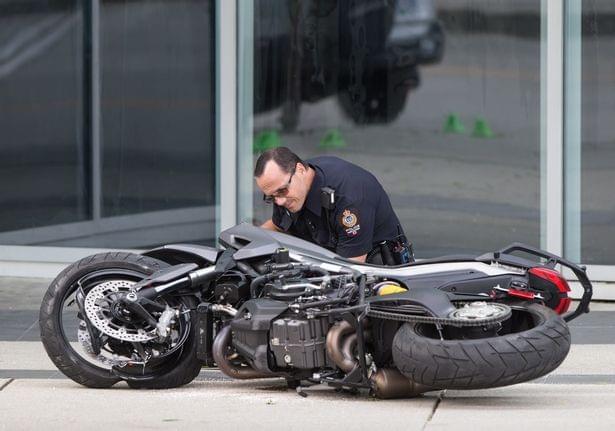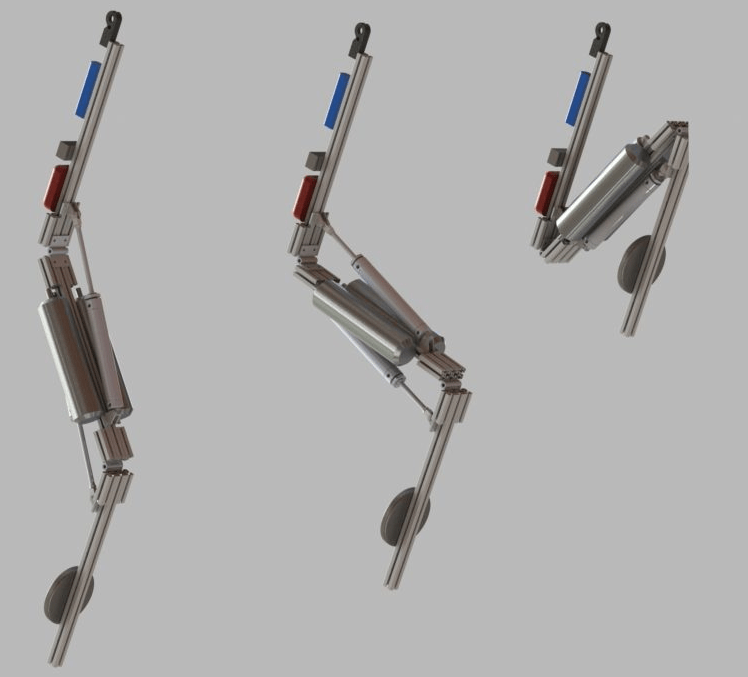Robot Stunt Doubles
Many of the action movies that dominate theaters in the 21st century contain death-defying, non human like stunts, such as jumping off a high building and catapulting safely to a nearby building, that draw in viewers.
Most of those stunts are not performed by the actors themselves, but rather with the help of their stunt doubles, highly trained professionals who execute these risky tricks, and post-production editing. While the jumps and flips are impressive to the viewers, the stunters can easily get injured or killed while executing them. David Holmes, Daniel Radcliffe’s stunt double in the first six Harry Potter films, injured his spine while filming Harry Potter and the Deathly Hallows, leaving him paralyzed below the waist. In July 2017, there were two stunt-related deaths while filming. John Bernecker, a cast member of The Walking Dead, suffered head injuries while filming and died shortly afterwards. On the set of Deadpool 2, Joi Harris, a rookie stunter, was killed in a motorcycle crash. There are not many safety policies for stunt doubles, and it is hard to prevent stunters’ injuries on set.

In May 2018, Disney created a human-scale robot called Stickman that has similar capabilities to those of human stunters. Stickman stands at seven feet tall, and can perform aerial acrobatic tricks such as backflips. Disney touts it as an “approximation” of a “human stunt performer with arms raised over his or her head.” The Stickman consists of three links that swing on a pendulum and can fold or unfold to tuck or untuck itself during a somersault, allowing it to change its inertia. Despite advancements in robot technologies, there are some aspects of human inertia and physiology that are not easily replicated.

Scientists have investigated the physics behind such stunts to make the Stickman as realistic as possible.
First, scientists experimented with the Stickman’s mid-air rotations and maximum height. In order for the robot to land safely, it was necessary that it spent the right amount of time in air and landed with an upright orientation. In the natural world, animals use inertial tails to reorient themselves. Developers have tried to replicate those tails and have attempted to use other methods such as spinning rods and internal weights to stabilize the Stickman, but all of the above produced a slow spin cycle, not allowing the Stickman to complete a full revolution. Next, scientists tested the robot’s angular momentum to control its landing angle and position. After finding the appropriate metrics for the Stickman’s launch system, scientists were able to throw the robot up to 10 meters away, control its landing point with a standard deviation of 0.3 meters, control its orientation with a standard deviation of 30 degrees, and have it perform multiple flips in succession. In the future, developers hope to refine and simplify models that provide more intuition for system behavior.
As of now, Disney plans on using the Stickman in the live shows at its theme parks. Tony Dohi, the principal research and development engineer, believes that the inclusion of the Stickman will eliminate the disconnect between Disney’s action films and its live attractions. Disney has not yet stated when the Stickman will start appearing in its parks.
Written by Angelina Zhang, Edited by Alexander Fleiss
Read more from RebellionResearch.com:
Why a Machine Learning Investment?
Interview with Astronaut Scott Kelly: An American Hero
AQUAPONICS: How Advanced Technology Grows Vegetables In The Desert
A New Breed of Airline Looks to Take the World by Storm!
$91 Million for a Pair of Gloves: Chelsea Leads Global Sports' Spending Spree
The World Cup Does Not Have a Lasting Positive Impact on Hosting Countries…
Dating Wine Using Nuclear Signatures
Baseball Attendance Keeps Falling
Giancarlo Stanton: A $300 Million Dollar Question Mark
A Conversation with Boston Red Sox Vice President of Player Personnel
Derek Jeter is Facing up to Half a Billion Dollars of Losses on the Miami Marlins
On Black Holes: Gateway to Another Dimension, or Ghosts of Stars’ Pasts?
Are Derek Jeter & the Miami Marlins Going to Face a Cash Crunch?
https://www.geek.com/tech/disneys-autonomous-robot-stunt-doubles-are-the-future-1744674/
https://www.theverge.com/circuitbreaker/2018/5/22/17381424/disney-research-stickman-robot-backflip
https://deadline.com/2017/08/deadpool-2-stunt-driver-killed-on-set-vancouver-1202148277/
https://www.mirror.co.uk/tv/tv-news/harry-potter-stuntman-suffers-horror-373575